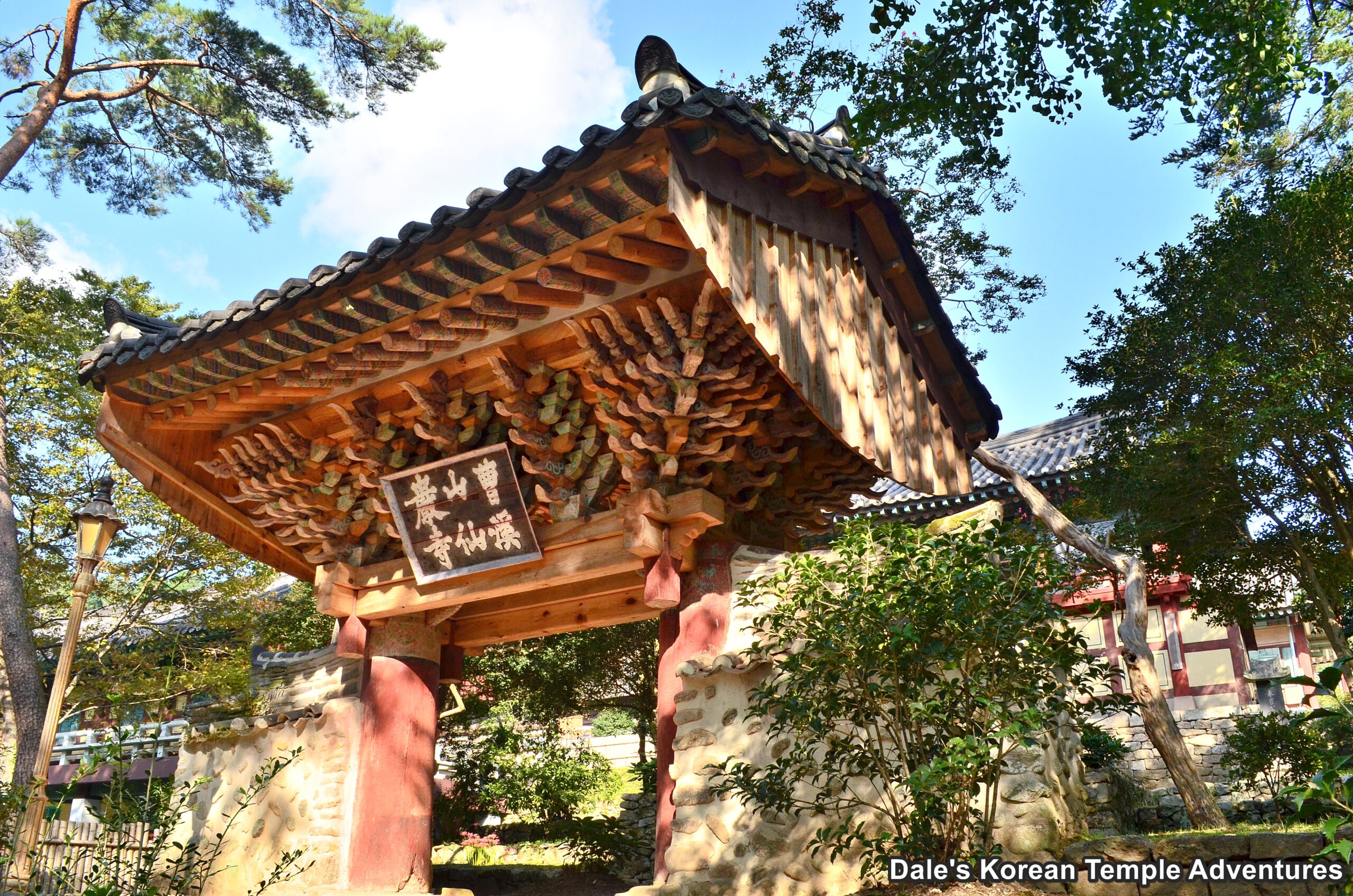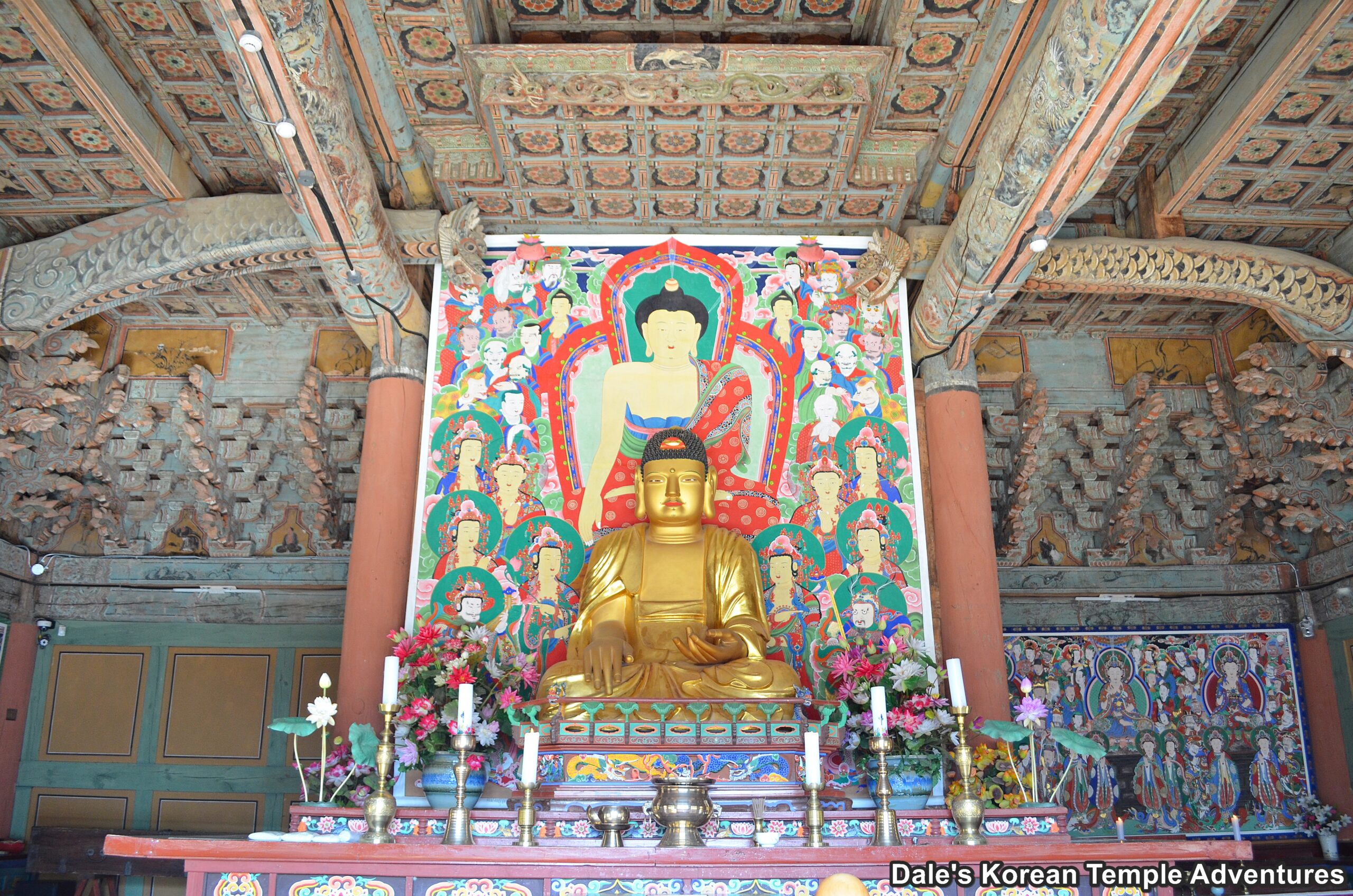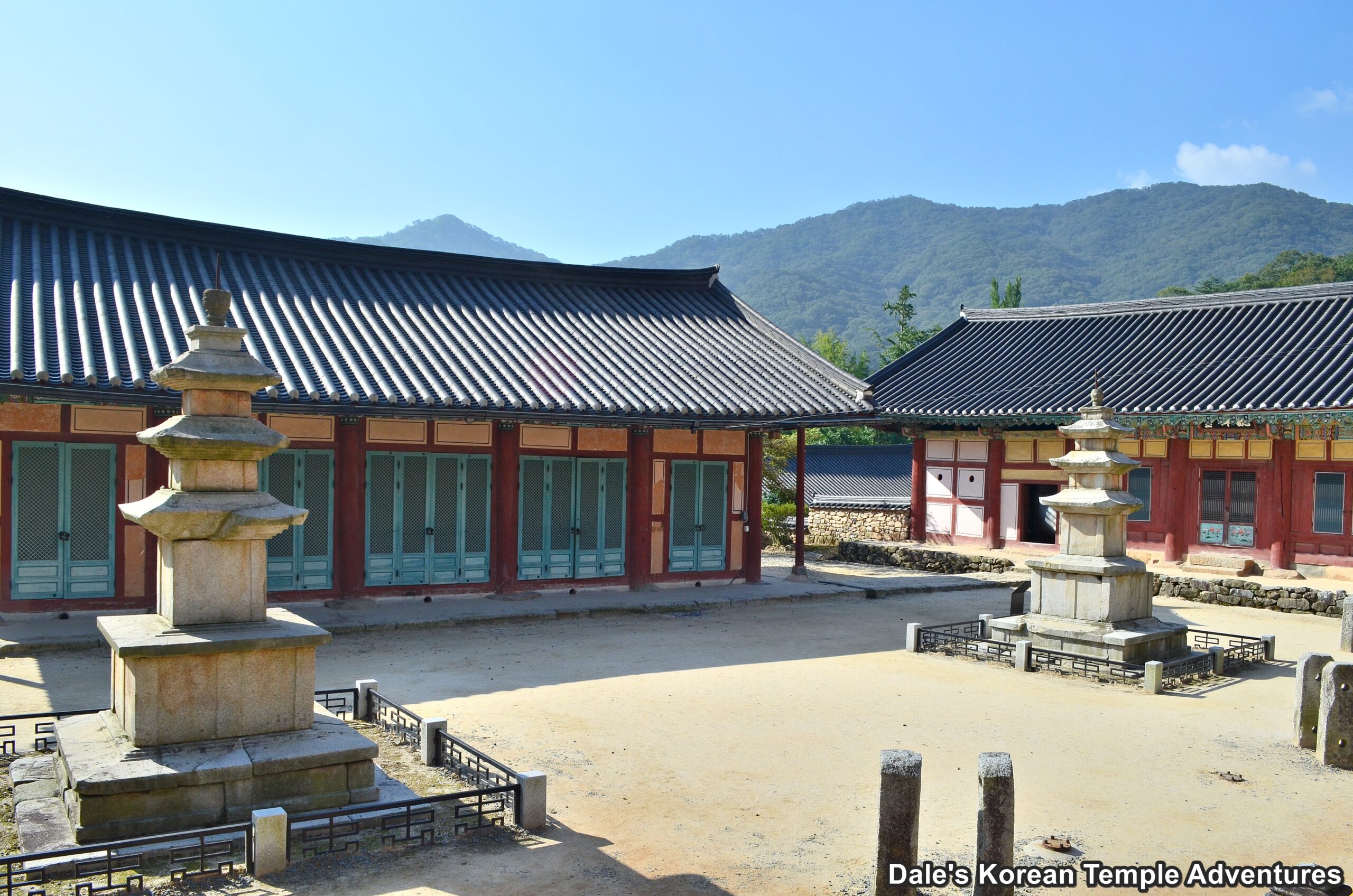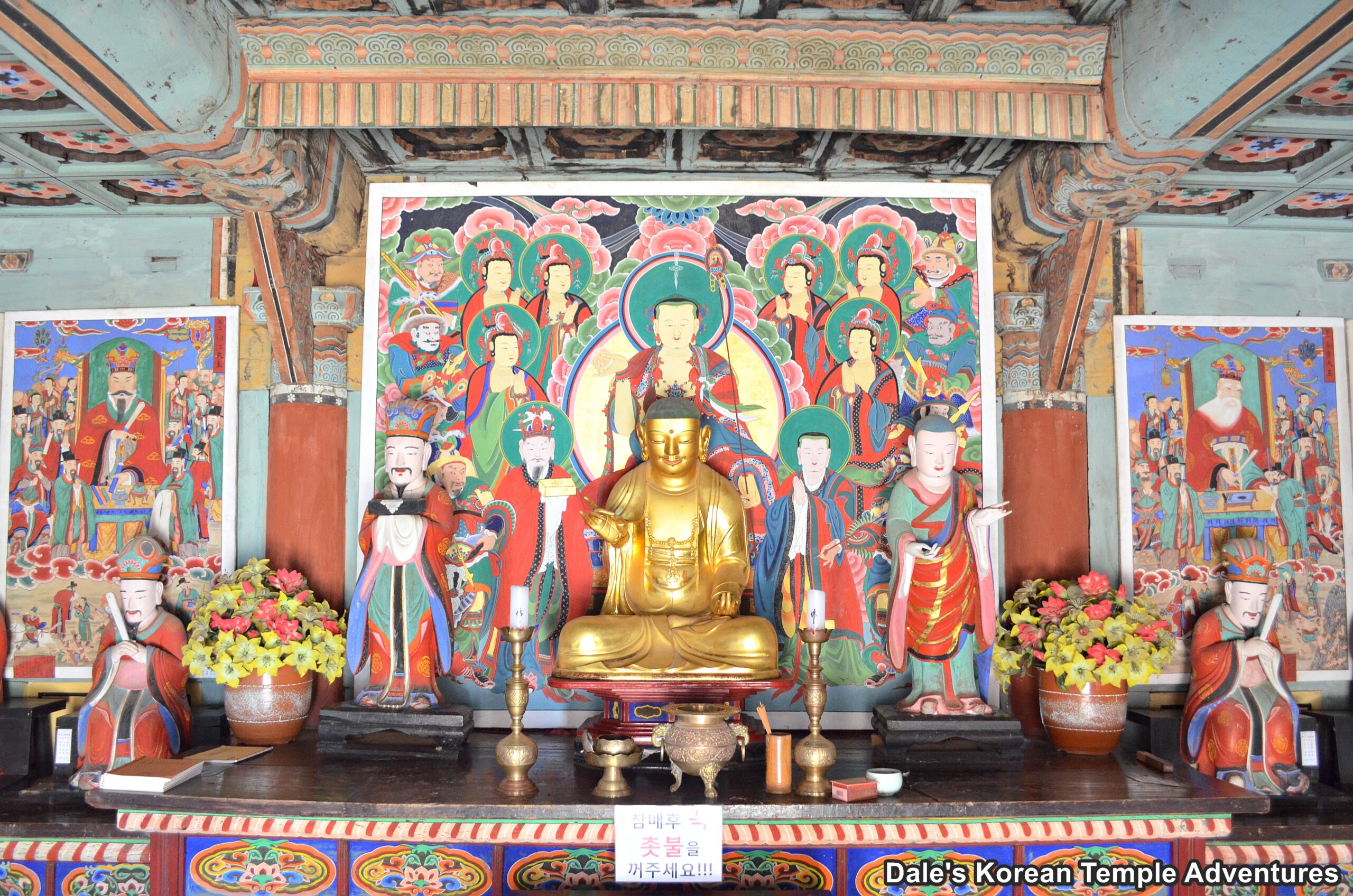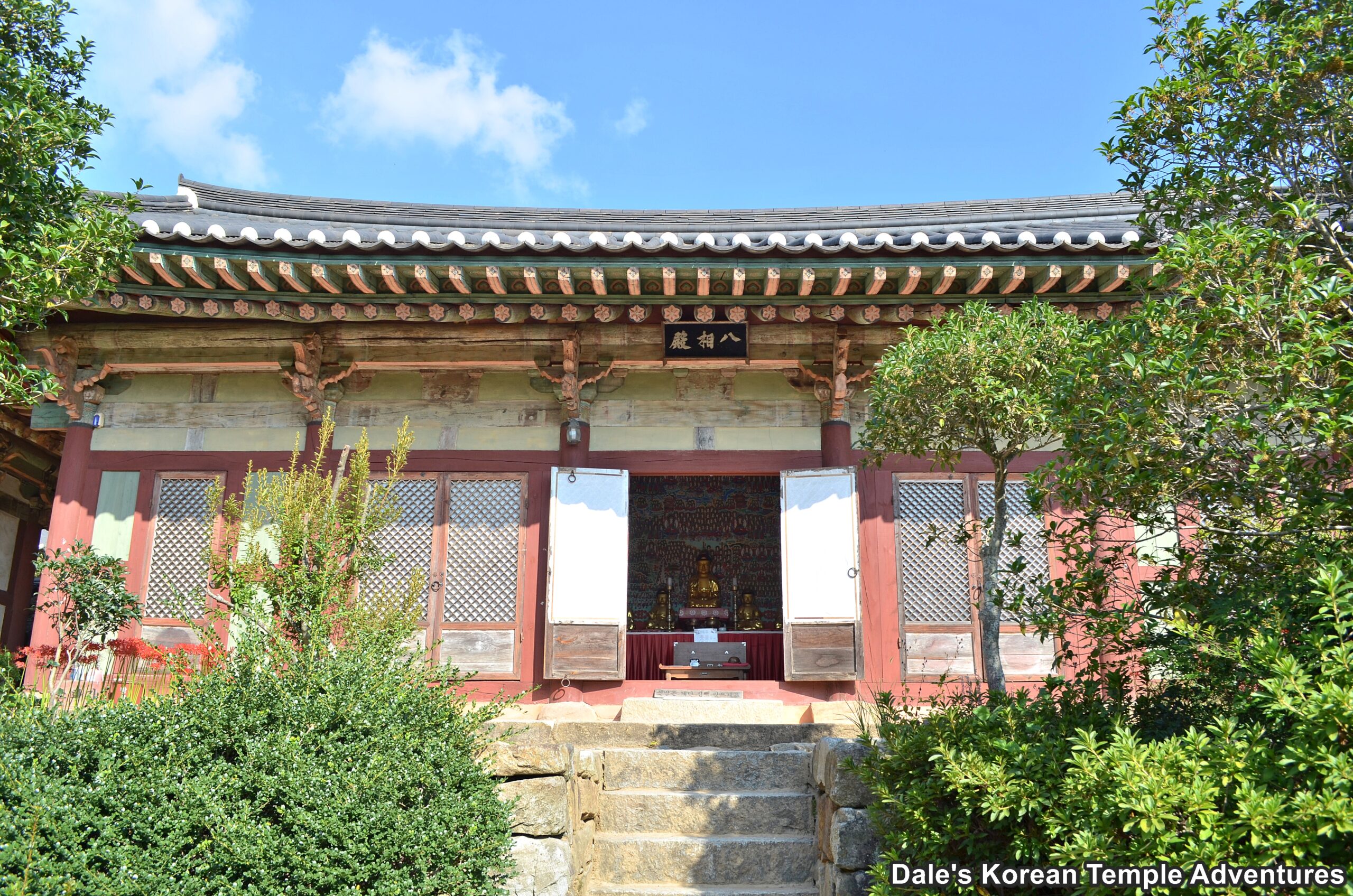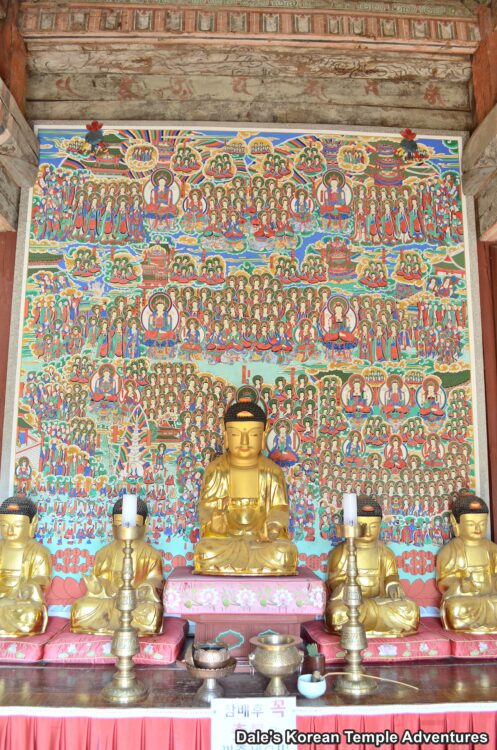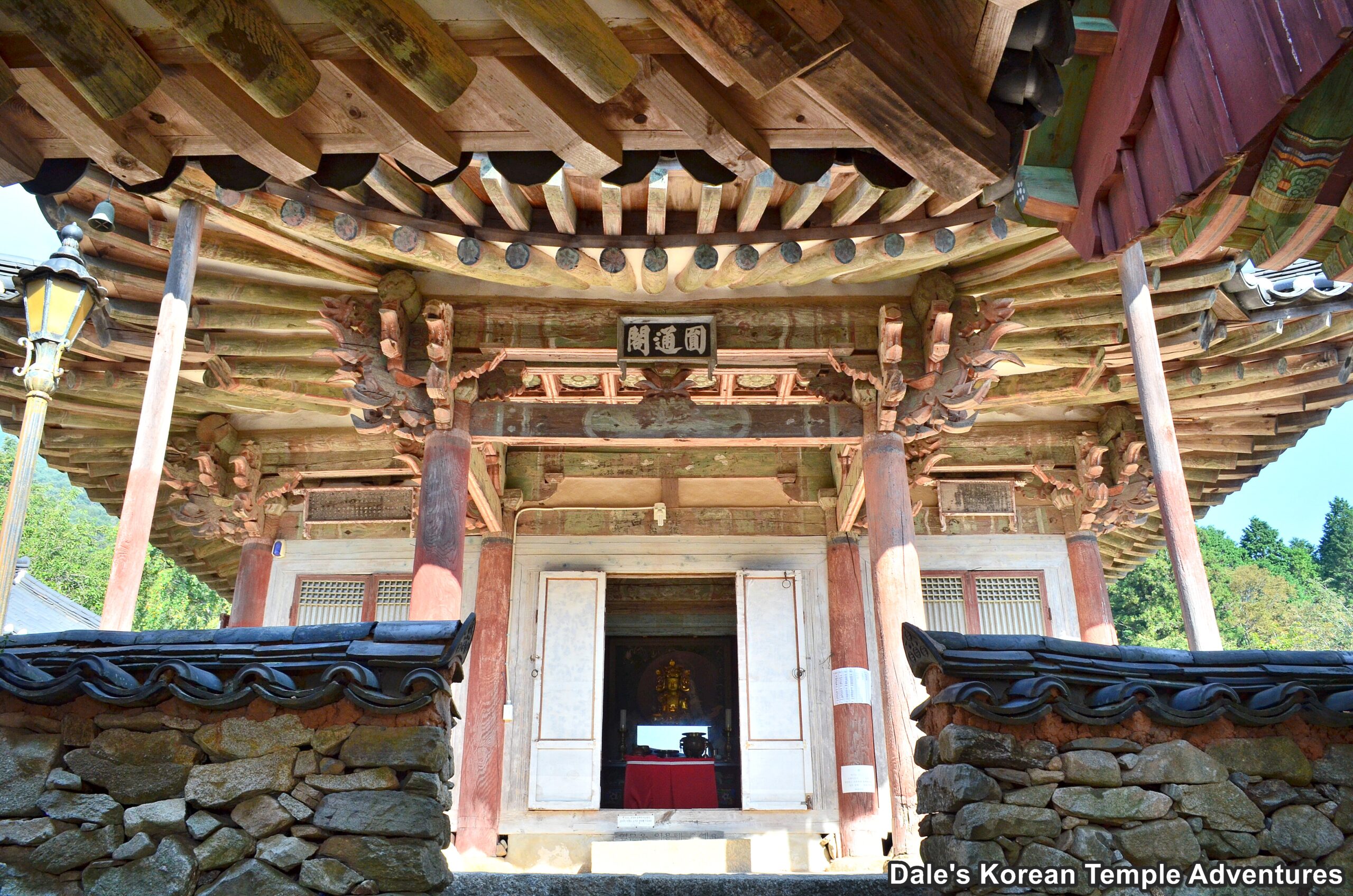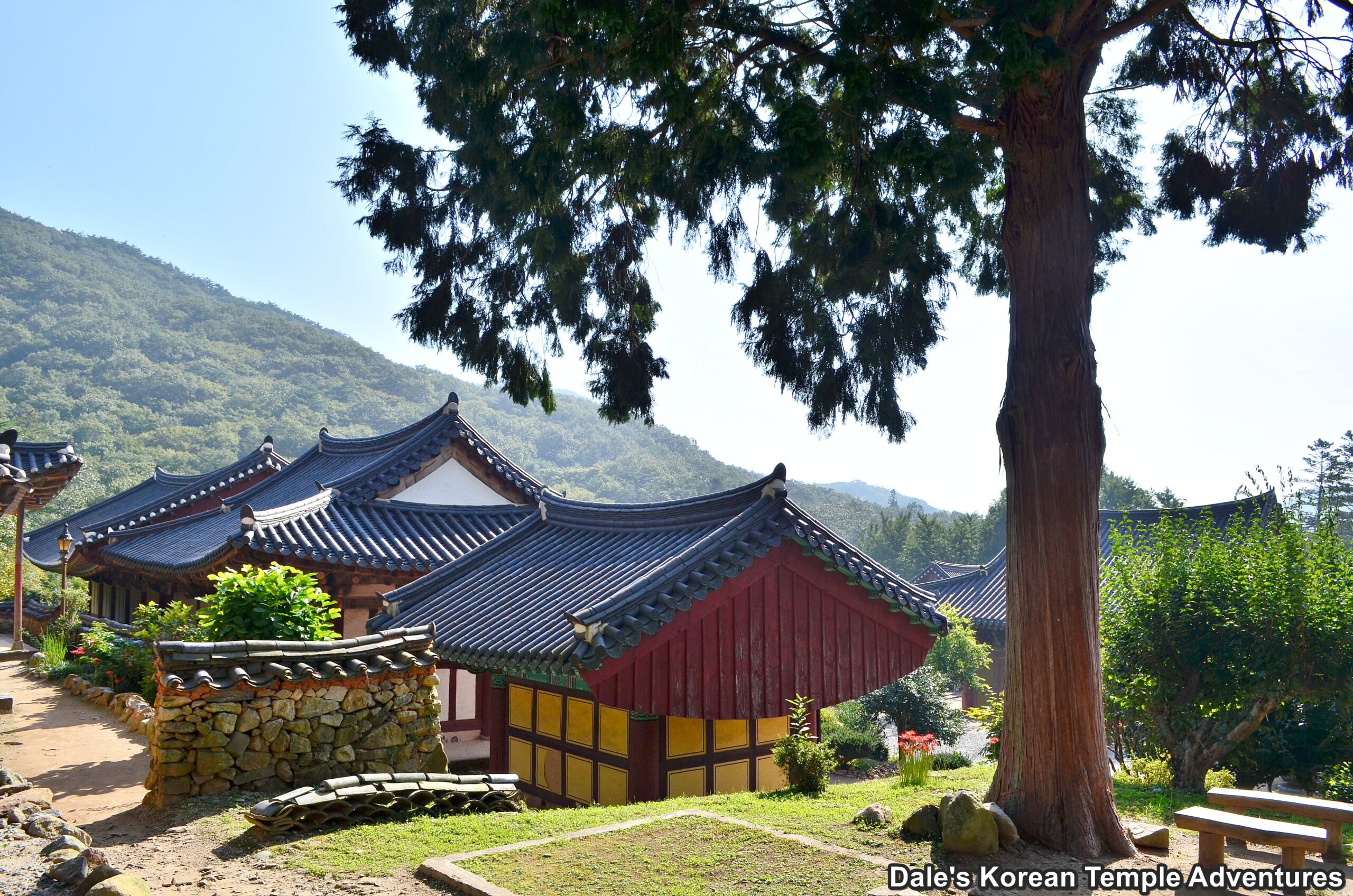Seonamsa Temple – 선암사 (Suncheon, Jeollanam-do)
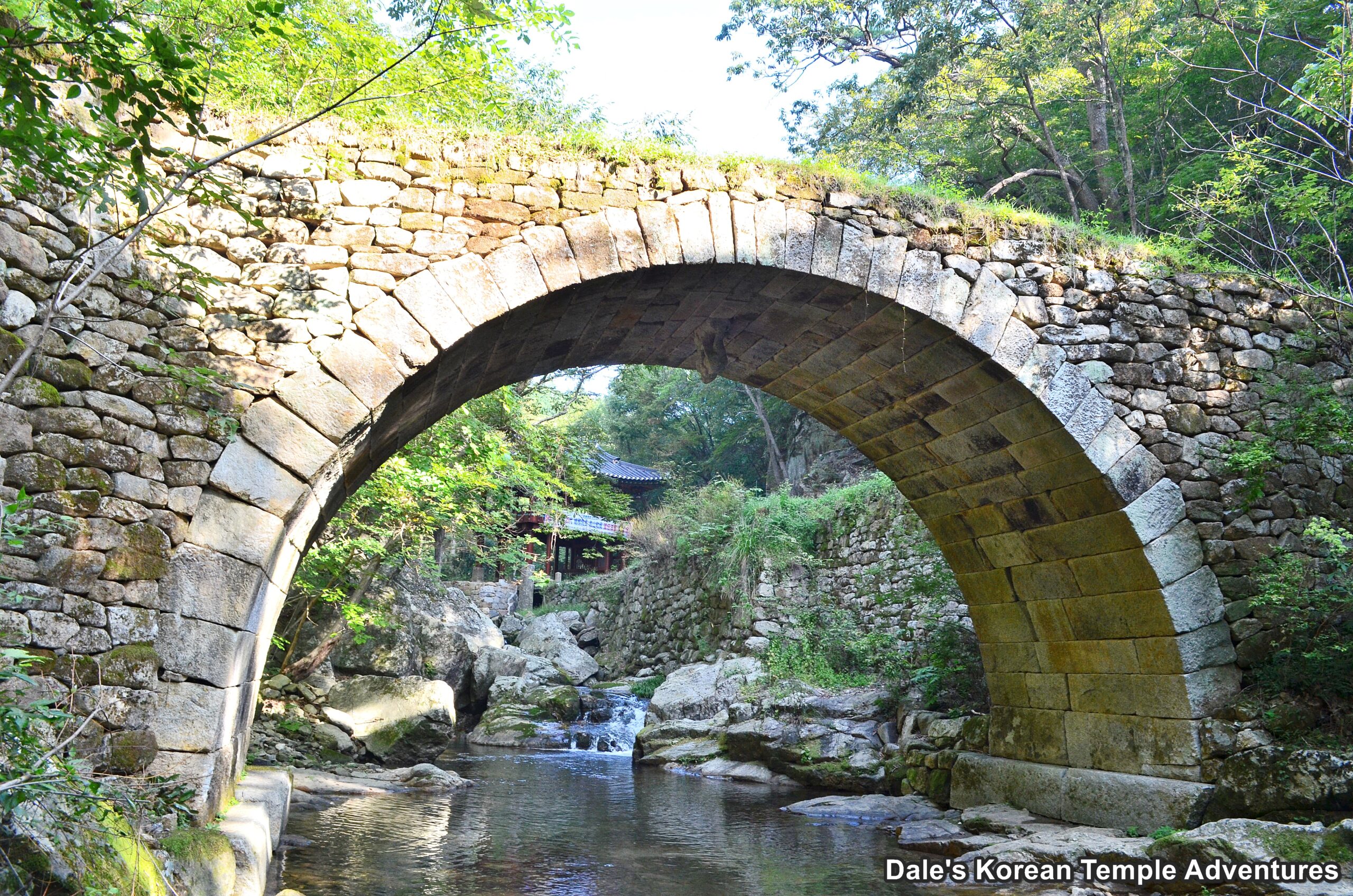
Temple History
Seonamsa Temple means “Immortals Rock Temple,” in English. The name of the temple is in reference to a flat rock west of the temple where Taoist monks used to play baduk (Go). Seonamsa Temple is located on the western side of Jogyesan Provincial Park. And both Seonamsa Temple and Jogyesan Provincial Park are located in Suncheon, Jeollanam-do just like its famous neighbour: Songgwangsa Temple. There are two competing foundation stories as to how Seonamsa Temple was first built. One states that the missionary monk Ado-hwasang built a hermitage that was named Biroam Hermitage (The Buddha of Cosmic Energy Hermitage) in the same location as present day Seonamsa Temple in 529 A.D. And the second story relates how later, in 875 A.D., Doseon-guksa (826-898 A.D.) built a large sized temple that he named Seonamsa Temple. The temple was rebuilt once more by Uicheon-guksa (1055-1101) during the early to mid Goryeo Dynasty (918-1392 A.D.). It was rebuilt at this time on a much larger scale.
During the Imjin War (1592-1598), Seonamsa Temple was completely destroyed by fire in 1597. After this destructive war, which saw Korea’s most famous temples destroyed, Seonamsa Temple was rebuilt over an eight year period under the supervision of the monks Gyeongjam, Gyeongjun, and Munjeong in 1660. The temple was expanded in 1698, by the monk Yakhyu-daesa, when the Wontong-jeon Hall was built. And in 1707, the Seungseon-gyo Bridge, for which Seonamsa Temple is aesthetically so well known, was first started to be built. Once more, a large number of buildings at Seonamsa Temple were destroyed by fire in 1759. As a result, a fifth reconstruction took place at the temple headed by the monks Sangwol and Seoak in 1761. In total, 551 workers were used to help rebuild this famous temple at this time. And for a sixth time, the temple needed to be rebuilt after a fire completely destroyed the temple in 1823. The rebuild started in 1824, and it was the Daeung-jeon Hall, the Myeongbu-jeon Hall, the Seolseon-dang hall, and the Simgeon-dang Hall that were rebuilt. In total, some three hundred monks helped contribute to this rebuild.
Seonamsa was chosen as one of the head temples of the Honam region (present day Jeollanam-do and Jeollabuk-do), when a thirty temple system was initiated by the Japanese Governor-General of Korea from 1910-1945. More recently, and in 1948, the temple was damaged during the Yeosu–Suncheon Rebellion (Oct. to Nov., 1948). The temple was further damaged by the Korean War (1950-1953). And sadly, some of the temple land was sold during land reforms in 1952. And since 1992, a large scale plan has been initiated to restore Seonamsa Temple to its original 11th century form.
Seonamsa Temple is the headquarters to the second largest Buddhist Order in Korea, the Taego Order, which consists of 3,100 temples. In total, Seonamsa Temple is home to fourteen Korean Treasures, one Historic Site, one Scenic Site, one Natural Monument, and one National Folklore Cultural Heritage. And alongside six other mountain temples, or Sansa, in Korean, Seonamsa Temple is a UNESCO World Heritage Site.
Temple Layout
To get to Seonamsa Temple from the temple parking lot, you’ll first need to walk about a kilometre to the temple grounds. Along the way, you’ll come across budo-won (Stupa Fields) which are cemeteries for monks that once called Seonamsa Temple home. You’ll know that you’re getting closer to the temple, when you see two rainbow-shaped bridges to your left. The first of the two is the rather nondescript. But it’s from this first bridge that you get a great view of the beautiful Seungseon-gyo Bridge, which lies just a little further up the Seonamsa-cheon Stream. This beautiful bridge was completed in 1713 by the monk Hoan. It was built over a six year period, and it’s definitely one of the more beautiful bridges that you’ll find at a Buddhist temple in Korea. And if you look close enough, and under the base of the arching bridge, you’ll see a protective dragon statue. This dragon is meant to ward off evil spirits that might be attempting to enter the temple grounds through the meandering stream that runs next to Seonamsa Temple. It’s also from the stream bed that you get some amazing pictures of the bridge and stream in beautiful harmony. Seungseon-gyo Bridge is Korean Treasure #400.
The next site that you’ll come across at Seonamsa Temple is the Gangseon Pavilion. And just to the right, you’ll see a beautiful oval-shaped pond with an island of red spider lilies at its centre. Just a little further, and past this pond, and up a pretty good incline in the road, you’ll finally come to the Iljumun Gate at Seonamsa Temple. The current Iljumun Gate at Seonamsa Temple dates back to 1719, after the original was destroyed by fire in 1540. Interestingly, and if you look close enough at the tablets that adorn the backside of the Iljumun Gate, you’ll see that the Hanja (Sino-Korean characters) mean “water” and “sea/ocean” that are written on them. This was done to help prevent fires from burning down the temple like they had done so often before in Seonamsa Temple’s long history.
After passing through the Iljumun Gate, or the “One Pillar Gate,” in English, you’ll come to the overly commercialized part of the temple near the Manse-ru Pavilion. There are walls of needless knick-knacks crammed around this pavilion. To the right, between the two gates, is the temple’s rather unassuming Beomjong-ru (Bell Pavilion).
Passing under the Manse-ru Pavilion, you’ll suddenly find yourself in the main temple courtyard with the Daeung-jeon Hall front and centre. In front of the main hall are two three-story stone pagodas. Both pagodas date back to the 9th century, and they’re simplistic in design. The Later Silla-era pagodas are also Korean Treasure #395. These two pagodas beautifully framed the Daeung-jeon Hall. The exterior walls to the Daeung-jeon Hall are plain except for the traditional dancheong colours that adorn it. Housed inside the Daeung-jeon Hall is a solitary seated statue of Seokgamoni-bul (The Historical Buddha). The Daeung-jeon Hall dates back to 1824, and it’s Korean Treasure #1311.
To the right of the Daeung-jeon main hall is the Jijang-jeon Hall. This hall is dedicated to Jijang-bosal (The Bodhisattva of the Afterlife). Sitting on the main altar of this shrine hall is a green haired seated statue of Jijang-bosal. This central statue is joined on both sides by statues and paintings of the Shiwang (The Ten Kings of the Underworld).
Through a path that leads past the Jijang-jeon Hall, and emerging on the other side and on an upper terrace, you’ll find five additional shrine halls. The first of the five is the Palsang-jeon Hall. This hall is believed to date back to the 18th century. And there are ten statues on the main altar centred by Seokgamoni-bul (The Historical Buddha). These statues are backed by copies of eight original Palsang-do (The Eight Scenes from the Buddha’s Life Murals). Next to the Palsang-jeon Hall, and to the left, is the Buljo-jeon Hall. Inside this hall are rows of both paintings and statues of the Buddha. Between these two halls, and up on a little ledge, is the Wontong-jeon Hall. This hall was first constructed in 1660, and it’s dedicated to Gwanseeum-bosal (The Bodhisattva of Compassion). The statue inside the Wontong-jeon Hall is both beautiful and ornate.
Next to the Buljo-jeon Hall is the Josa-jeon Hall, which houses eight paintings of monks who once called Seonamsa Temple home. This hall stands next to a beautiful lotus pond. Past the shrubbery, and out on the other side, you’ll find the Samseong-gak Hall. Housed inside this shaman shrine hall is a Sanshin (Mountain Spirit) mural with a cartoonish-looking tiger keeping the Mountain Spirit company.
Admission to the temple is 2,000 won.
How To Get There
You’ll first need to get to the Suncheon Jonghap Bus Terminal (순천종합버스터미널). From this bus terminal, you’ll need to take either Bus #1 or Bus #16 to get to the Seonamsa Temple bus stop. Once you’ve arrived at the stop, you’ll need to walk for about a kilometre up the forested trail.
Overall Rating: 8.5/10
Just for the sheer number of cultural artifacts and Korean Treasures, Seonamsa Temple quickly becomes a must. However, when you look more carefully, you’ll find that Seonamsa Temple is home to the stunning Seungseon-gyo Bridge, the beautiful Wontong-jeon Hall, and the historic Iljumun Gate with interesting inscriptions on it. And when you think that Songgwangsa Temple is just over the mountain, you’ll need to find time in your schedule to visit Seonamsa Temple.

